Get Same Day Shipping
Get Same Day Shipping

BMW has had many memorable performance models over the decades, and the 90s are no different. BMW really hit top speed coming into the 90s on the track and street, with many of the most legendary cars in its history being produced during this era. Listed below are some of the top performance BMW cars of this time period, did your favorite model make the cut?
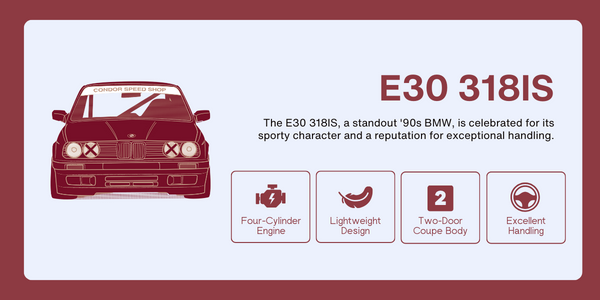
The BMW E30 3 series is considered an 80’s icon, and it’s the basis for several of the greatest BMW race cars of all time, but the E30 platform continued to be developed into the early 90s with excellent results. Production for the 318is began in 1989 and was first introduced as a 1990 model. It was only available as a U.S. model in 1991, making it one of the rarer E30 models, especially in this country.
Unlike previous 318 models, which could be found in sedan, convertible, and station wagon form, the 318is was only available as a two-door coupe. The 318is was powered by the new M42 four-cylinder engine, which would also be found in later E36 models, making it the newest engine found in any production E30. While M3s and 325Is models are extraordinary cars, the E30 318is remains one of the best bargain performance BMWs of all time.
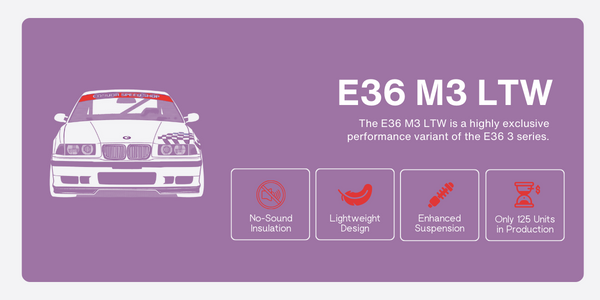
The E36 3 series began production in 1990, lasted to the year 2000, and was the successor to the E21 and E30. The E36 M3 was launched in 1992 and was the first M3 available as a four-door sedan. Most U.S.-spec cars arrived with the S52 six-cylinder engine and came painted in an array of flashy colors, including the now-famous Dakar yellow. These remain some of the most popular BMWs today, but one E36 generation stands above the rest, the E36 M3 Light Weight.
The Light Weight was not a success when first introduced, and many dealers found them to be a hard sale. They were 200 lbs lighter than a stock M3. They lacked the sound insulation, a sunroof, leather seats, and A/C that were found on regular production M3s, and they all came with specific parts in the trunk including a rear wing and decal kit that the owner could install at their discretion. They featured updated suspension, shortened drive ratios, and alloy wheels. But here is the real kicker, only 125 E36 M3 Light Weights were ever made, and some believe that number might even be lower. You are more likely to come across a Ferrari F40 in the wild than a genuine Light Weight, which makes this E36 one of the rarest performance BMWs of any era.
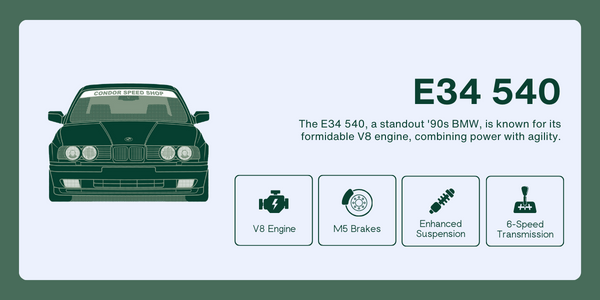
The E34 5 series began production in 1987 and was the replacement for the much-loved E28. The E34’s body style brought BMW into the modern age and stayed in production until 1996. Most E34 models featured a six-cylinder engine, including the M5 models, but many performance-minded enthusiasts prefer the E34 540 due to its V8 engine. The 540i M Sport model arrived in North America in 1995 as a replacement for the M5 and is the most popular of all the 540 models. It featured M5 brakes, updated suspension, and the M5’s manual six-speed transmission.
The E34 540 was powered by the M60 engine, which at the time was BMW’s first production V8 in 25 years. It was also used to power the luxurious 7 Series and the Grand Touring 8 Series Models. This powerful engine mated to a manual transmission, gave the 540 a real muscle car feel while maintaining the luxury and style that BMW customers at the time were looking for, and made it one of the top performance BMWs of the 90s.
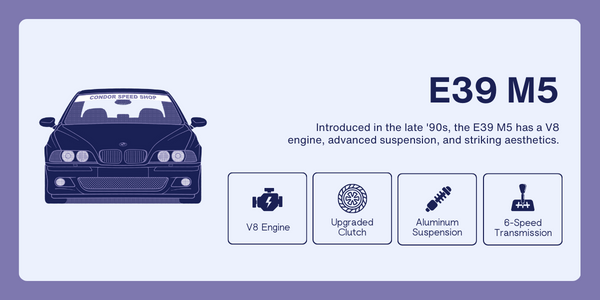
The E39 BMW began production in 1995 as a replacement for the E34. As the replacement for the third-generation E34 5 series, it had huge shoes to fill, and it did so in a big way. The E39 M5 arrived in 1998 and was an instant success. It was the first BMW M5 to feature a V8 engine and aluminum front-end suspension components. The S62 V8 engine under the hood put out 394 hp and was mated to a six-speed manual transmission which featured an upgraded clutch and shorter diff ratio than other BMW E39 models.
Whereas the E34 was a visual departure from the E28, the E39 took the 5 Series to the next level visually and to this day remains one of the most popular BMWs of all time. Unlike the E34 M5, which could be found with a touring/station wagon body style, the E39 M5 could only be purchased as a four-door sedan with a manual transmission. While the E39 M5 is a fantastic car to drive and handles remarkably well, its real claim to fame is that during its production life, it was the fastest sedan in the world, making it one of the most desirable BMW performance cars of the 90s.
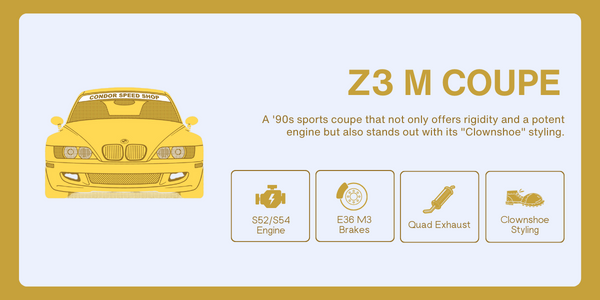
The BMW Z3 arrived in 1995, was based on the E36 3 series platform, and was available as a two-seat roadster or a two-seat coupe. The M roadster and M coupe were introduced in 1997 and were powered by the S52 six-cylinder engine and were only available with a five-speed transmission. In 2001 the engine was upgraded to the S54 six-cylinder engine that powered the legendary E46 M3. All the BMW Z3 roadster models are fun cars to drive, but the coupe’s structural rigidity sets it apart and makes it a popular track car.
The M coupe featured a limited-slip diff, E36 M3 brakes, updated aerodynamic mirrors, bespoke wheels, quad exhaust tips, and many other features that set it apart from standard Z3 coupe models. It could also be found in several M-only colors similar to the M3. The M coupe makes a perfect track car and utilizes the principle of function over form, but this has held it back in one way, its body style. The Z3 M coupe’s body style is polarizing and more lovingly known as the “Clownshoe” due to its hatch-back styling. You either love or hate its looks, but no one can deny its BMW Motorsport underpinnings which make it one of the top performance BMWs of the '90s.
Okay, I know what you are thinking, this is not a BMW. Why is it on this list? Well, the McLaren F1 might not have a BMW badge on the hood, but it is powered by the BMW S70/2 V12 engine. The F1’s production began in 1992, and every single example produced featured a BMW power plant, including the F1 that took overall victory at the 1996 24 Hours of Le Mans. I think there is room for the most incredible supercar of all time on the list of top performance BMWs of the 90s.
Leave a comment